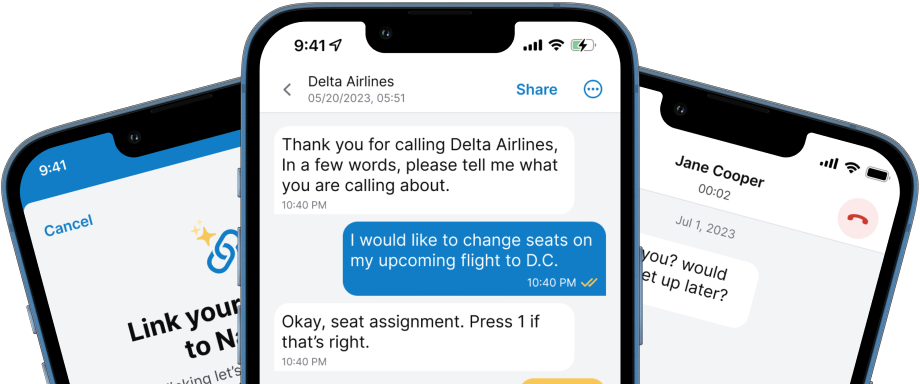How To Choose the Right Hearing Protection
Hearing protection is not a one-size-fits-all solution.Read this article to help you decide what is the best option for you!

Hearing protection is not a one-size-fits-all solution. With so many options available, it can be overwhelming to choose the right one. But considering how important it is to protect our hearing and take preventive measures, we've made it easy to help you navigate the world of hearing protection and make an informed decision.
What to Consider When Selecting Hearing Protection
When selecting hearing protection, there are several essential factors to consider:
Comfort is #1
Finding hearing protection that fits comfortably and properly will determine if you’ll actually wear the protective device. If your earplugs or earmuffs are uncomfortable, you're less likely to wear them consistently. Look for options made from soft, hypoallergenic materials that fit securely without causing discomfort.
Additionally, if you’re looking for a discrete design, new innovative designs come in minimal and clear presentations that make it appear as if you’re not wearing hearing protection.
Proper Fit
A proper fit ensures optimal protection. For earplugs, this means inserting them correctly into the ear canal to create a seal. Earmuffs should fit snugly over the ears without gaps.
When selecting earplugs, consider anticipating the scenarios in which you’ll use them. If you’re likely to be active, such as jumping or dancing, the earplugs must remain securely in place at all times.
Noise Reduction Ratings
Noise Reduction Ratings (NRR) is a standard measurement used to indicate the effectiveness of hearing protection devices in reducing noise exposure in decibels (dB). The type of environment you’re exposed to influences the level of protection you need. High-noise environments, such as construction sites or factories, require hearing protection with a higher Noise Reduction Rating (NRR) to block out sound effectively.
Consider dB Levels
Understanding decibel (dB) levels is essential for selecting appropriate hearing protection. The higher the dB level, the louder the sound. Exposure to sounds above 85 dB can cause hearing damage over time. Look for hearing protection with a sufficient dB reduction to bring noise levels to safer levels.
Evaluate the Nature of Noise
Decibel levels are great indicators for assessing the noise level in your environment and can can help determine the strength of hearing protection required. However, the nature of the noise is also essential. For example, earmuffs might be a better choice if noise is intermittent. This is because constantly inserting and removing earplugs can be both ineffective and inconvenient, particularly when noise levels fluctuate.
Types of Hearing Protection

There are three main styles of hearing protection:
Earplugs: Fit directly into the ear canal and come in disposable foam, reusable silicone, and custom-molded varieties.
- Expandable foam plugs: These earplugs can be shaped to fit every person's ear canal. They are comfortable, affordable, and easy to fit.
- Pre-molded, reusable plugs: These type of earplugs are usually made of silicone, plastic, or rubber and are relatively inexpensive. They come in different sizes and are mostly washable and reusable.
- Canal caps: Canal caps have flexible tips that act as caps, which plug the ear canal, closing the ear opening. For this reason, they are the least protective compared to other types of earplugs or earmuffs.
Earmuffs: Cover the entire ear and are typically adjustable for a comfortable fit. They provide consistent protection, are one size fits most, and are easy to put on and take off.
Combination: Some hearing protection options combine earplugs and earmuffs for maximum protection.
The Role of Hearing Protection in Preventing Occupational Hearing Loss
Occupational hearing loss is a significant concern in noisy work environments. Adhering to Occupational Safety and Health Administration (OSHA) regulations and properly fitting hearing protection can help prevent hearing loss and preserve your long-term hearing health. Invest in high-quality hearing protection to protect your ears on the job.
Adhering to OSHA Standards for Hearing Safety
Prolonged exposure to excessive noise, especially above safe levels, can lead to potential hearing loss. The Occupational Safety and Health Administration (OSHA) requires employers to provide hearing protectors to all workers exposed to 8-hour TWA noise levels of 85 dB or above and specifies measures to reduce exposure to excessive noises.
For workplace safety, it's essential to adhere to Occupational Safety and Health Administration (OSHA) standards for hearing protection. From providing proper hearing protection devices such as earplugs and earmuffs to creating safe and quiet spaces away from excessive noise where employees can go as needed to rest their ears.
Selecting the Right Hearing Protection for Various Work Environments

Different work environments require different levels of hearing protection. Various industries, such as construction sites, manufacturing plants, airports, and music venues, exhibit environments characterized by high decibel levels.
Also, professions such as musicians, concert crew members, and nightclub staff are frequently exposed to high sound volumes, potentially causing irreversible damage to their hearing over time. Even recreational activities like hunting or motorsports can subject individuals to dangerous noise levels, warranting the use of appropriate hearing protection.
Evaluate the noise levels in your workplace and choose hearing protection that provides adequate noise reduction. Remember to consider factors such as comfort, fit, and durability.
Maintenance, Care, and Lifespan of Hearing Protection Devices
Proper maintenance and care are essential for prolonging the lifespan of your hearing protection devices. Here are some tips to extend the lifespan of your device:
- Replace disposable earplugs regularly
- Inspect earmuffs for signs of wear and tear
- Keep your hearing protection devices clean by wiping them down with a mild soap and water solution
- Store your hearing protection devices in a clean, dry, and well-ventilated area when not in use.
In conclusion, choosing the right hearing protection involves considering various factors, from comfort and fit to noise reduction ratings and workplace regulations. By understanding your needs and selecting appropriate hearing protection, you can safeguard your ears and preserve your hearing health for years to come.





